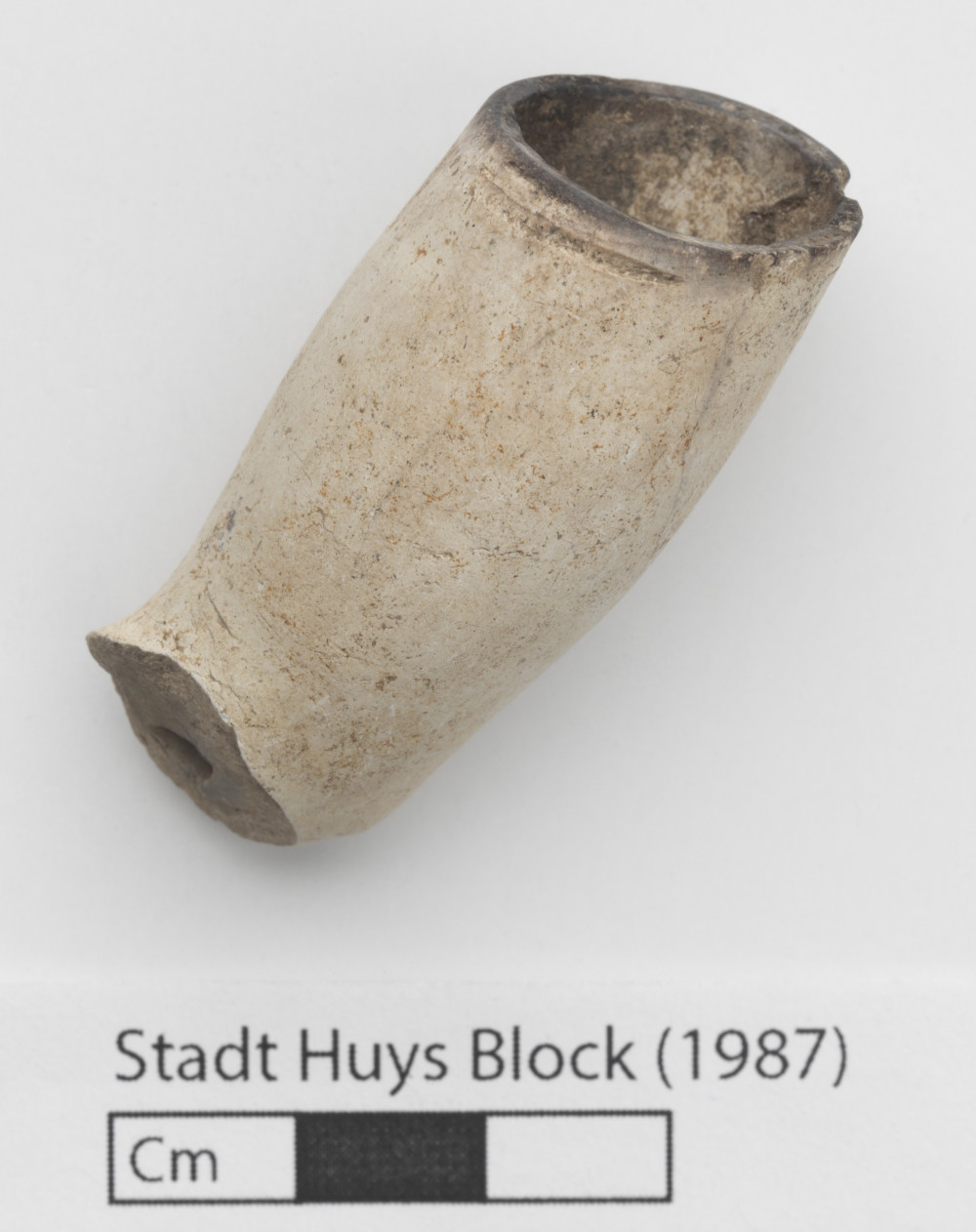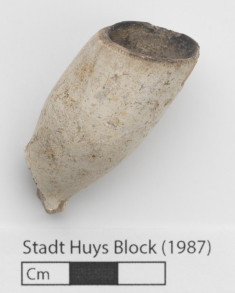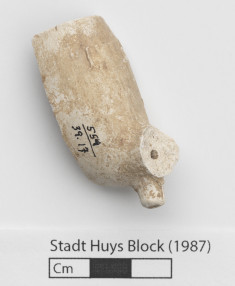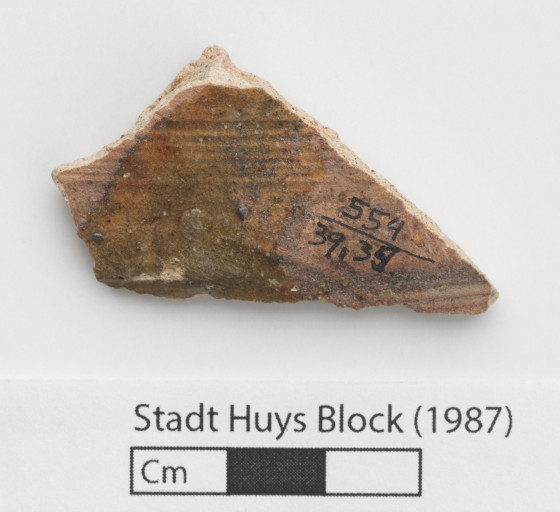Introduction: People have occupied and modified Lot 16 – a small parcel of land that once fronted Pearl Street – for a long time. However, only two buildings are on record as having been built on the Lot in the past 400 years. The earliest Colonial building was constructed sometime between 1660-1672 and the latest historic building in 1870. In addition, walls, outbuildings, and other structures were installed over the life of the Lot. Each building episode leaves below-ground traces for archaeologists to find. The history of a site can then be pieced together by "reading" the layers beneath the earth's surface (also known as stratigraphy) and analyzing its artifacts. One of the main tasks for the archaeologists on the Stadt Huys project was to determine what, if any, historical remains still existed beneath the modern ground surface
Rationale: Test Cuts B and D were placed in an enclosed, rectangular area below the southwest corner of Lot 16. This area was bounded by brick and stone walls on all sides, including a 2-foot brick wall in-between Test Cuts B/B2 and D. These test cuts were excavated during the initial phase of field work in early October 1979 and thus were hugely important to the development of the site's testing methodology. Though these test cuts are listed as Lot 8 on field paperwork, their interpretation and contextual information in the site report was included in Lot 16.
Results: A localized fill was found only in Test Cut D from 17- to 30-inches below excavation surface along its northern wall. The soil characteristics of this fill are different from others in the area. Artifacts recovered included a mixture of 17th- through 20th-century artifacts.
Lot 8/16, Test Cut D, Stratum III, Level B
-
Collection method
Shovel, Trowel, Screen (1/4-inch mesh). Arbitrary 4-inch level.
-
Soil description
Greenish Gray and Reddish Brown Mottled Clay
-
Munsell
10YR 4/3, 7.5YR 5/4, 2.5Y 5/4, 10YR 6/2










